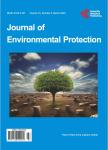Quantitative Analysis of the Sized Ranged Plastic Debris on Beach Shoreline along the Limbe Coastline, Cameroon
Quantitative Analysis of the Sized Ranged Plastic Debris on Beach Shoreline along the Limbe Coastline, Cameroon作者机构:Department of Environmental Science Faculty of Science University of Buea P.O. Box 63 Molyko-Buea Cameroon Department of Chemistry Faculty of Science University of Buea P.O. Box 63 Molyko-Buea Cameroon
出 版 物:《Journal of Environmental Protection》 (环境保护(英文))
年 卷 期:2023年第14卷第6期
页 面:441-469页
主 题:Plastic Debris Beach Size-Ranged Class 4M’s Abundance Cameroon
摘 要:In recent years, increased interest in investigating the accumulation of sized ranged plastic debris has been observed on beaches along coastlines. The abundance and distribution of the 4M’s sized class plastic debris were quantitatively assessed on five sandy beaches, in Cameroon. Duplicates of 2 × 2 m (4 m2) quadrants were sampled in each beach/month with a total of 80 quadrants. Collected plastic samples were washed, sieved and dried. Particles of size, ≥2 mm, were sorted and measured using a 30 cm ruler, and converted to mm. Overall, 12,822 particles by number (530.59 g) with a mean abundance of 40.07 items/m2 (1.66 g/m2) plastic debris was recorded. ANOVA (p = 0.05) shows a linear relationship between the meso- and micro-sized classes with significantly higher abundance recorded in LDB sites. The highest abundance by weight was recorded in August and June numerically. 80% of the plastic particles were between the size range, of 5 - 20 mm by number and 6 - 100 mm by weight. Moreover, in all beaches micro-sized class plastics were dominated by number 42.40% with fragmented debris dominant, in number/weight, 54.86% (25.69%) while meso-sized class plastics were 29.28% dominated by weight, with fragmented debris type, the most prevalence in number and weight as 46.11% (26.18%). On average, color and shape fractions revealed, colored and irregularly shaped plastics were dominant with an abundance of 80.45 ± 18.17 items/m2 (2.58 ± 0.68 g/m2) and 47.24 ± 20.40 items/m2 (1.39 ± 0.66 g/m2). Finally, the 0.0001 g plastic debris was dominant with a concentration, of 33.68 ± 7.23 items/m2. The intense use of beaches for recreation and poor waste disposal has increased the potential for plastic contamination.



